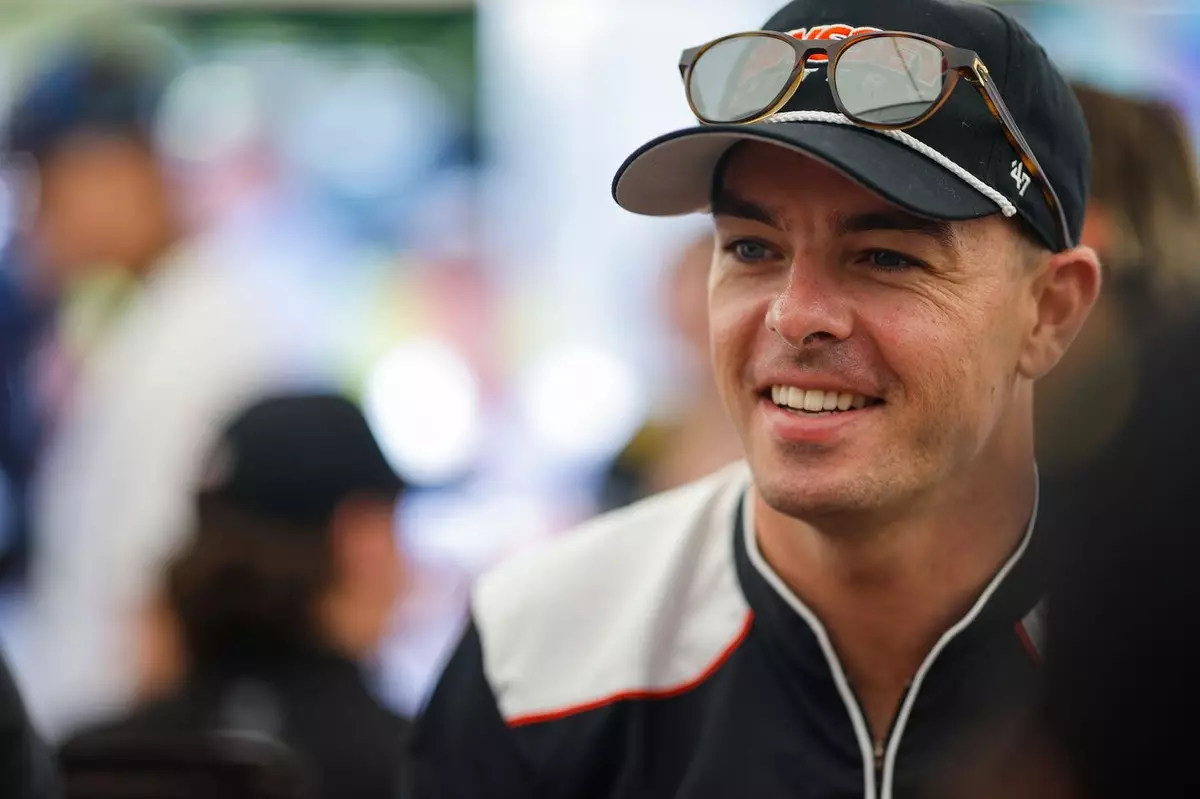In a surprising yet exhilarating twist, Scott McLaughlin, the talented IndyCar star known for his blistering pace and determination, is venturing into a new realm of racing. This transition is not born out of necessity but driven by a heartfelt desire—an authentic pursuit of personal dreams. The Kiwi driver’s decision to race a Chevrolet Corvette Z06 GT3.R at Suzuka’s legendary 1000 Kilometer race is more than a participation; it embodies a daring leap into endurance racing’s rich, challenging culture. This move signifies a shift from his established success in open-wheel racing to embracing the grittier, more strategic world of GT and sports car competition.
McLaughlin’s entrance into this discipline might seem like a mere side note in his remarkable career so far, but upon deeper inspection, it reflects a rare level of self-awareness and humility. Not every professional athlete is willing to step outside their comfort zone to pursue a deeply personal goal. His statement about Suzuka being a “bucket list” track reveals that this race isn’t just another start—it’s a milestone, a way for him to connect more intimately with the sport, the machinery, and history.
Driving a Corvette Z06 GT3.R for JMR—a noteworthy player in the Asian GT scene—McLaughlin finds himself alongside esteemed factory drivers Alexander Sims and Nicky Catsburg. This camaraderie isn’t superficial; it signifies a bridging of worlds, a convergence of racing philosophies from different continents and backgrounds. McLaughlin describes these drivers as his “General Motors friends,” emphasizing the importance of shared engineering excellence and camaraderie. It’s a testament to how motorsport is often a community that transcends national borders, built on mutual passion and relentless pursuit of perfection.
From Indianapolis to Suzuka: A Journey of Versatility and Passion
Before his foray into endurance racing, McLaughlin’s career was predominantly rooted in open-wheel racing—successfully competing in IndyCar with Team Penske, a team regarded globally for its professionalism and competitiveness. His ability to switch gears from IndyCar’s single-seater finesse to the imposing presence of a GT3 race car highlights a versatility that few drivers possess. His prior sportscar appearances, including an impressive third overall at Sebring and a victory in the Bathurst 12 Hours, reflect a growing affinity for multi-disciplinary racing.
This layered experience enriches his ability to adapt swiftly to the demanding environment of endurance racing, which combines technical finesse, strategic patience, and relentless mental endurance. The Suzuka race also represents an ambitious chapter—after all, it marks the return of the Intercontinental GT Challenge (IGTC) to one of Japan’s most revered circuits since 2019. The details of the race format, which has been extended from traditional 10-hour stints to a strict 1000 km pursuit, speaks to the evolving nature of endurance racing and McLaughlin’s desire to test himself against top-tier international competition.
His prior race at Daytona, driven in the IMSA series, served as a warm-up and a proving ground for his adaptability. McLaughlin’s evolution into a versatile driver is no accident; it signals an athlete eager to expand his horizons, to challenge his limits, and to understand racing in its myriad forms at the highest level.
The Significance of Suzuka and Endurance Racing for Modern Drivers
For McLaughlin, Suzuka isn’t just a race; it’s a pilgrimage to a legendary track that embodies racing history and technical mastery. The circuit’s unforgiving corners and elevation changes have been the site of countless historic battles, and to compete there is a badge of honor. Pushing himself in a different racing environment—where strategy and consistency often outweigh outright speed—is a bold statement of intent.
This entry, especially with a globally recognized brand like Corvette, also signals that top drivers are increasingly viewing endurance racing as a crucial part of their athletic journey. It is a field where reputation, craftsmanship, and adaptability collide. McLaughlin’s involvement highlights how modern drivers seek to diversify to stay relevant, deepen their skillset, and achieve personal fulfillment outside their usual domain.
There’s a strategic advantage for manufacturers like Chevrolet, and teams such as JMR, to involve stars from other disciplines; they boost their global visibility and tap into new fanbases. For McLaughlin personally, it’s an opportunity to forge new relationships, learn new racing philosophies, and add a different flavor to his racing repertoire.
The bigger picture is that endurance racing—particularly at iconic locations like Suzuka—serves as a proving ground that elevates drivers’ capabilities beyond raw speed. It demands patience, mental resilience, and an intricate understanding of race engineering, all qualities that seasoned drivers like McLaughlin are eager to develop.
This new chapter isn’t just about ticking a box; it’s about reshaping his identity as a driver willing to embrace challenges, reinvent himself continuously, and push the boundaries of what he thought was possible. In doing so, Scott McLaughlin not only fulfills his personal ambitions but also inspires others to pursue their passions with unwavering commitment.


Leave a Reply